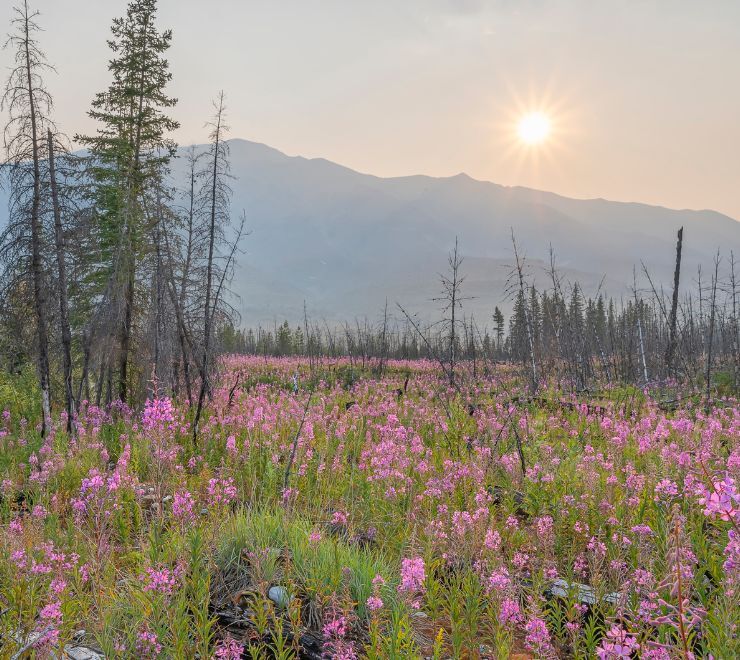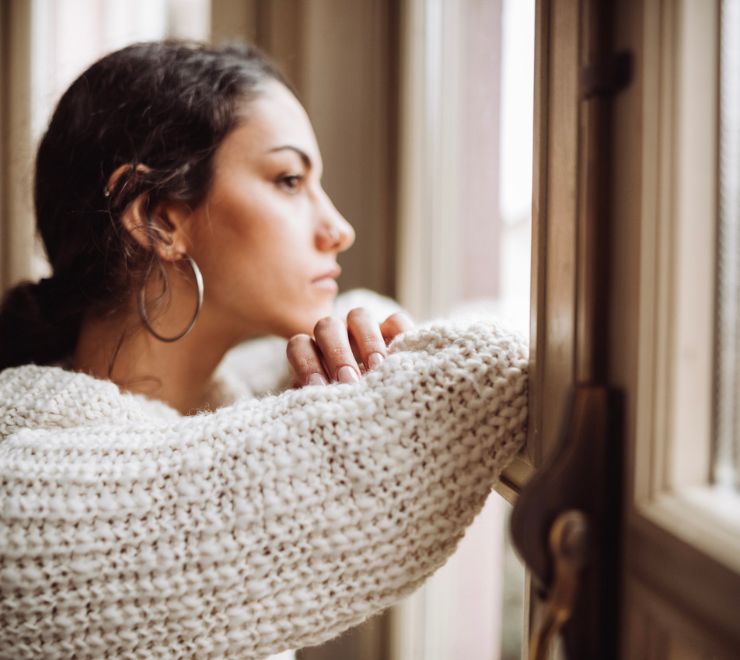
My fill-in-the-blanks safety plan for any time
Whether you’re at home, at school, in the community or anywhere else, your safety is always a priority. With this interactive safety plan tool, you can find ways to create or access safer spaces for times when you’re feeling unsafe — even if it’s just for the short term. Your safety plan is yours to design and use in whatever ways feel best for you.
If you're in immediate danger, emergency services are available across Canada. Mobile crisis support and other community services are also available in some areas. You can use Resources Around Me to find what's best for you and available nearest your location.
If you are having thoughts of suicide, you can also call or text 9-8-8, a 24/7 confidential national suicide crisis helpline for support.
I want to learn more about safety planning!
You can explore Kids Help Phone’s Safety Planning Guide for additional info, tools and more.
What is a safety plan?
You are important and you deserve to feel safe. If you’re in a potentially harmful situation, there are actions you can take to put your safety first, take care of yourself and / or get support. Having a safety plan can help you know what your options are if / when you start to recognize an unsafe situation. Every person and every situation is different. This tool can help you make a safety plan that’s unique to you and your needs.
What can I expect in this fill-in-the-blanks safety plan tool?
In this tool, you’ll find a series of questions you can use as prompts to add your own responses and fill out a safety plan. You may notice questions about signs you might be in danger, places you can go if you don’t feel safe, who you can ask for help, how you can contact emergency / community services and more.
You can fill out this activity on your own or with someone you trust. Try to keep in mind this resource isn’t supposed to tell you what to do — you don’t have to do anything you don’t want to do or follow the prompts exactly. You also don’t have to complete every section in this activity. This tool is simply a guide and the examples may not work best for you. Once you’ve created your plan, if you find part(s) of your plan isn’t helpful in moments you feel unsafe, you can consider trying another strategy from your plan or connecting with someone you trust for support.
I want to fill out my safety plan — how can I get started?
When you’re ready, you can tap “GET STARTED” on the interactive window below to begin filling out your own safety plan.
You can tap through to fill it out now or download it to complete later. If you’ve completed a section or want to skip a section, you can tap “NEXT” at the bottom of the window to continue to the next question. You can also tap “BACK” to return to a previous section at any time. You can tap the arrow icon at the top of the screen to start over.
After you’ve had a chance to consider each section of the tool, you will have an option to download a PDF copy of your safety plan. You can save / print / take a photo of your plan. If you’re unable to save a copy now or you’d like to create a new / updated plan, you can come back to this tool at any time.
My Safety Plan
This tool will guide you through 10 fill-in-the-blanks questions to create your own safety plan. After you've considered all of the sections you'd like to fill out (none of the fields are mandatory), you'll have the option to download, save, print and / or take a photo of your plan. You can tap “GET STARTED” below to begin.
Get StartedPrefer to complete the plan offline? You can download and print the safety plan instead.
DOWNLOADWhere can I keep my safety plan?
Try to think of a place that only you will know / remember where you can easily find your plan when you need it. Some ideas might be:
- on a password-protected device (e.g. a phone, tablet, computer, etc.)
- in a drawer
- under a mattress
- in a backpack / locker
- with someone you trust
- etc.
If you’re unable to write or print a safety plan, that’s OK, too. You can try to think of ways to memorize your safety plan or keep objects near you that may help you recall it.
What are some warning signs that tell me I might be in danger?
When was the last time I felt safe / safer?
Safety can be hard to imagine if you’ve been feeling unsafe lately. Take a moment to remember the last time you felt safe or safer than you do now. This may help you identify what to do when you’re in danger by considering if it’s possible to return to that place / person / etc. to feel safer again.
Where are some places I can go if I don't feel safe?
Moving to a place where you feel safer for a while may help in situations when you’re having trouble creating a safer space where you are / your space has become unsafe. You may consider re-locating to any other place that feels safe, such as:
- another room
- someone else’s house
- a public space in your community
- a youth centre
- a local child protection services agency
- an emergency services location (e.g. hospital, police station, etc.)
- home
- anywhere else you can think of
How can I get to a safer place?
Try to think of how you can get to a place you think might be safer for you, for example:
- walk
- ride a bike / scooter
- take public transportation
- call someone for a ride
- etc.
You can reflect on what you may need in order to get there (e.g. money, tickets, maps, etc.). You may also consider what else you may need to do before leaving (e.g. pack important belongings to take with you, etc.).
Who are people I can trust?
If you don’t feel safe — whether it’s at home, school, someone else’s house or elsewhere — it can help to tell a person(s) you trust. This could be a:
- friend
- family / community member
- teacher
- coach
- Elder
- person from a place of worship
- community service worker
- etc.
When you don’t feel safe in the moment, you can connect with this person(s) for support. It may help to have back-up contacts in case the first person(s) you connect with isn’t available.
What's a code word / signal I can use to ask people I trust for help?
It can be helpful to have a code word / signal to use with a person(s) you trust when you feel unsafe and need support. It might also help to consider how you’ll communicate your code word / signal to that person(s), for example:
- phone call
- text
- physical gesture
- facial expression
- written note / image
- sound
- spoken word(s)
- etc.
Try to tell the person(s) you trust your code word / signal ahead of time so they know what to do when you use it, for example:
- call emergency services for you
- ask a safe adult for help
- meet you somewhere potentially safer you’ve agreed on
- etc.
What are some things I can say / do to distance myself from people I feel unsafe around?
Sometimes, there may be things you can say / do to help create space from other people and feel safer. For example, you might be able to say:
- “I’m going to my room to do homework”
- “I think I’ll go play outside”
- “I have to go home now”
- etc.
Getting involved in school / community activities or asking to stay at someone else’s house are examples of things you could do, too.
What are some things I can do to create space and take care of myself in the moment?
If you can’t physically get to a potentially safer place, creating mental space for yourself in your location might help. This may include strategies to subtly let others around you know you’re unavailable to engage with them. For example:
- putting headphones on
- doing a hobby
- going for a walk
- moving to a different room
- etc.
How can I contact emergency / community services when I'm in danger?
If you’re in danger, you may want to seek help right away, for example, contact:
- 911
- emergency services
- community supports
You can also plan to use a code word / signal with a person(s) you trust so they can contact support for you. Another option may be to go to your nearest emergency / community services office (if you’re able to leave your location) to get help.
After you contact 911 or emergency / community services, you can tell them you need help. If you know what emergency service you need you can tell them, for example:
- police
- ambulance
- fire department
- child protection service
If not, that’s OK too. Any information you know and can give them may help. This could include your name, age, location, phone number, what’s making you feel unsafe, etc.
You're at the end of the tool. You can tap “DOWNLOAD” to print a copy / save a copy of your safety plan on your device. You can take a picture of your plan and put it somewhere private or keep it with you, too. You can also memorize it or come back to this tool to re-create your plan at any time.
Are you seeking more support?
No matter what you're feeling or the type of support you need, Kids Help Phone is here for you. Call. Text. Chat. Visit KidsHelpPhone.ca
I need more support – what can I do?
Safety planning can be scary and confusing. You don’t have to navigate it on your own. For free, bilingual and confidential support with creating a safety plan or anything else on your mind, you can contact Kids Help Phone 24/7.


New content
-

Category Learn
Watch KHP’s 2023–2024 Impact Report video
-

Category Learn
Meet the Athletes for Feel Out Loud
-

Category Learn
Even champions need champions.
-

Category Learn
Feel Out Loud and show support with KHP merch










